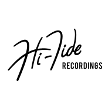Date: 3/3/2010
Location: Music Box Studios, Garden Grove, CA
Personnel: Matt Quilter, Guitars, Bass. Lee Kix, Drums
Equipment: Fender Strat, Fender Jazz Bass, 1963 Fender Tremolux, 1963 Fender Reverb Unit, Quilter Slantmaster 50, Camco Drumset
Wages: A hundred bucks!
Show of hands---who remembers (or cares) what an Optigan is? I was blissfully unaware of the contraption until I was recruited by one of the honchos at QSC Audio Products to create a surf disc for the thing. Turns out that it is a small keyboard console created by Mattel back in the early 70's and was weeks ahead of its time, but was expensive to produce, fragile and noisy, and never really caught on. As with any retro instrument, however, it still has its loyal fans, and is still in the stable of a lot of studios and composers (soundtrack for that new Chrysler commercial?---yup, an Optigan). It's SORT of like a poor man's Mellotron, but on a much cheaper and Casio-like scale (check out http://www.optigan.com/ for all you ever wanted to know). The kicker is that it is not a synthesizer---it's all real instruments recorded optically onto an LP-sized round piece of film. The console has chord buttons for most any progression, five "effects" buttons, and the melody is played on the keyboard. The technology is primitive and long out of production, but producer Pea Hicks has acquired the rights to all things Optigan, and is starting to produce new discs for the thing. One of the first is to be a "surf rock" disc. Well, alright! Sign me up!
The actual session was a hoot. Once we managed to grasp the concept, it went fairly quickly. Lee and I played to a click track, and all that was required is that we had two bars of quality audio per key. We played live amplified bass and drums (separation? bleed? no problem! It's all in mono, and the noise floor makes a cassette look like a glass master). We'd do a circle of major chords, eight bars each, then the minor chords and finally a few diminished (for surf? OK!). We went through them all three times, each with a different (real simple) bass pattern. Then, I had to overdub rhythm guitar onto every variation. (In creating the actual disc, two seconds of every change will be snipped and printed, so that each chord button will have that corresponding loop assigned to it). We did a few snippets for the "effects" buttons---drum fills and guitar glissandos (BUT---they can only be two seconds long! No time to get in even a decent "Pipeline" fill). Then the real fun began: I had to do the staccato picking thing for all three octaves of the keyboard (remember, it's in two-second samples. No muted or single-string picking, it just won't work). Now, I'm not the greatest staccato guy, but how tough could it be? First, the keyboard starts in F! No low E? Arrgggh! So I start in F and play all the way up to high F on the high E string. Ouch. Try playing eight bars on each note for 37 notes, first in a DD rythmic pattern, then in straight 16th notes, just in case the DD thing didn't work. Double ouch. I think that I managed to hang in there OK, but my right hand now looks like a claw.
Epilog: The producers were happy and claim there's more work for us in the pipeline (pun intended), we had fun and got paid (!), and I can scratch "Optigan session" off my bucket list. I'm sure that the disc will sell in the tens of copies, but that's up to the geniuses in marketing.
More reverb, Matt Q

































